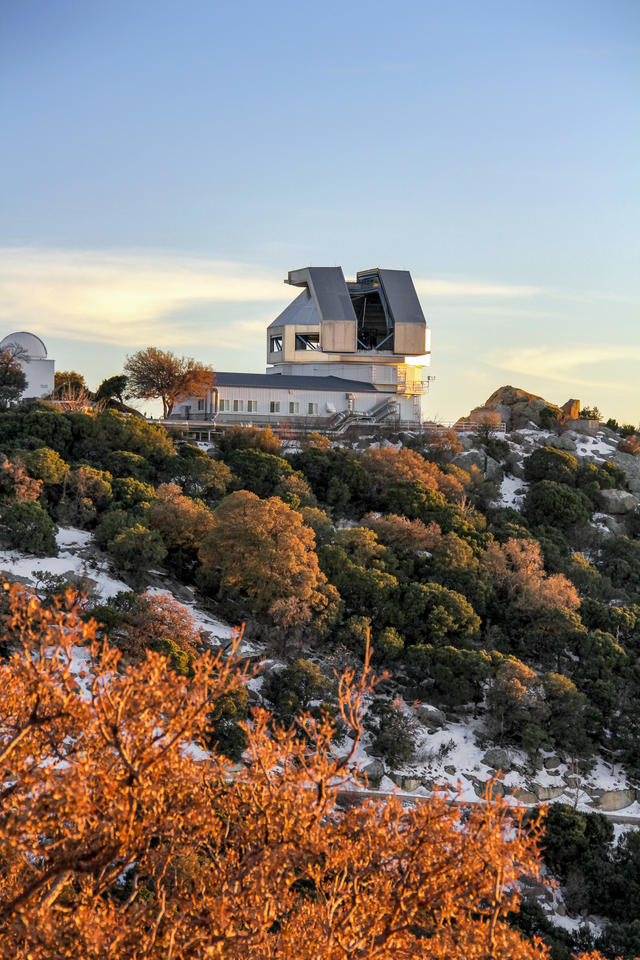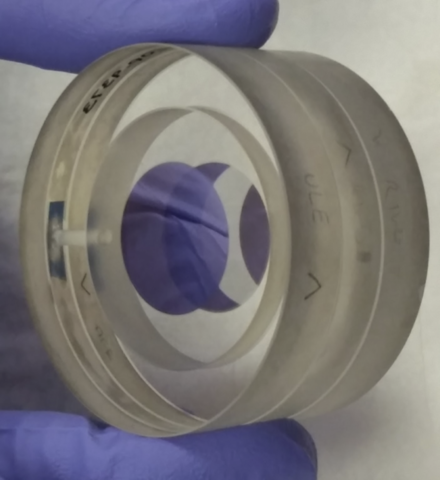WIYN Telescope

Telescope Details
Location
Kitt Peak National Observatory near Tucson, Arizona
Purpose
This telescope is on the hunt for exoplanets — planets outside of our solar system.
NIST’s role
NEID, a spectrograph on board the telescope, searches for and tracks the Doppler shift of starlight due to a gravitational pull from an orbiting planet. This requires a large number of measurements, for which NIST provided an astro-etalon as a reliable reference. An etalon sends light into a cavity that only certain frequencies, or colors, can pass through. It offers a simpler, more stable backup for the spectrograph’s laser frequency comb, normally used as a ruler for light (and not designed by NIST in this case).
Significant discoveries and current status
NEID began scientific operations in July 2021.
In 2023, NEID, along with the Hobby-Eberly Telescope’s infrared Habitable-Zone Planet Finder (HPF) and ground-based photometry using smaller telescopes, characterized the orbit and size and derived the mass and density of a “warm Jupiter” planet discovered by the TESS spacecraft. This planet is the coolest of its type to be discovered, with a tepid temperature of 100 degrees Celsius, the boiling point of water at Earth’s surface.
Other interesting facts
The name NEID — pronounced NOO-id — is derived from the word meaning “to see” in the native language of the Tohono O’odham, on whose land Kitt Peak National Observatory is located.
Operated by
WIYN is owned and operated by the WIYN Consortium, which consists of the University of Wisconsin, Indiana University, the National Optical Astronomy Observatory, the University of Missouri and Purdue University.
Media


